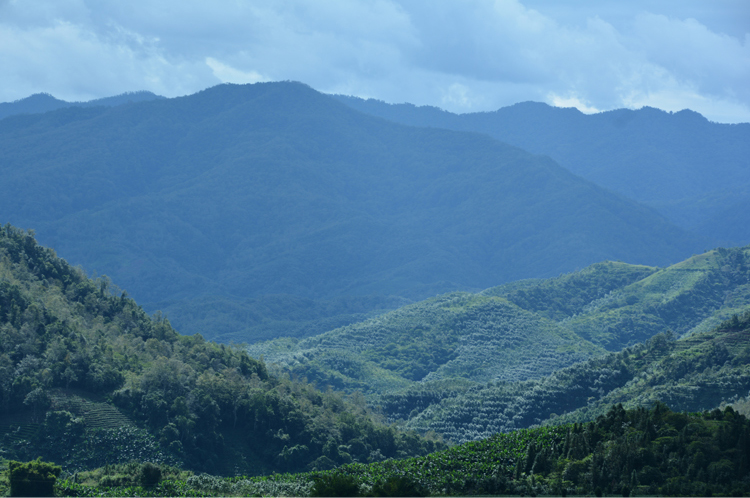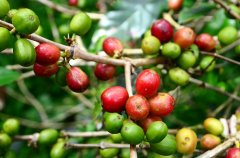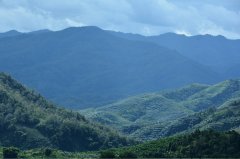There are several stages of coffee roasting. Why do coffee beans have to be roasted before drinking?
There are several stages of coffee roasting. Why do coffee beans have to be roasted before drinking?

The so-called coffee roasting (Coffee Roasting) refers to the process of providing heat to the coffee beans, promoting a series of physical and chemical changes inside the coffee beans, and showing the sour taste, sweet taste, bitter taste, aroma and other flavors of the coffee beans in the process, forming mellowness and tone.
Among the factors that affect the taste of a cup of coffee: raw beans account for 60%, roasting accounts for 30%, and extraction accounts for 10%. The ultimate goal of coffee roasting is to maximize the personality of raw beans and minimize the appearance of defective taste.
Coffee roasting stage
1. Drying and dehydration
In the early stage of baking, raw beans begin to absorb heat, and the water inside gradually evaporates; the color gradually changes from green to yellow or light brown, and the silver skin begins to fall off, and a faint smell of grass can be smelled.
2. High temperature decomposition
With the gradual increase of soybean temperature, sucrose decomposition and caramelization produce a large amount of water and by-product carbon dioxide; the interior of raw beans changes from endothermic to exothermic, and the water in the beans will evaporate into gas and promote the accumulation of carbon dioxide, the two work together to gradually increase the pressure on the physical structure of coffee beans, the first burst, which is called "first explosion".
As the heating continues, more violent reactions take place inside the beans, releasing a large amount of heat and entering the "second explosion" stage; the plant cell walls of coffee beans gradually break, deform and become more fragile, and the pores left by water fleeting accelerate to expand. Aromatic oil forms and gradually spills over to the surface of coffee beans. High temperature cracking continued to occur, coffee beans changed from brown to dark brown, and gradually entered the stage of re-baking.
3. Cooling
Coffee must be cooled immediately after roasting, quickly stop the pyrolysis at high temperature and lock the flavor. Otherwise, if the high temperature in the beans continues to work, the aromatic substances will be burned.
In the field of professional baking, large roasters are equipped with a tray with a rotatable driving arm; when the baking is completed, the beans are automatically fed into the tray, and the fan at the bottom of the tray is immediately activated to blow cold air. And the pushing arm stirs the coffee beans to cool them.
Roasting degree and characteristics of coffee beans
From the point of view of the baking degree, the deeper the baking degree, the stronger the bitter taste; the lighter the baking degree, the stronger the sour taste.
1. Light Roast
The most mild fried culture, no fragrance and concentration to speak of, the beans are not yet ripe, with the green taste of raw beans, not suitable for grinding and drinking. It's usually used as an experiment.
2. Cinnamon Roast
Deep shallow baking, slightly fragrant, sour taste. It is favored by people in the western United States.
3. Media Roast
Light medium baking, chestnut color appearance, medium aroma / mellow / acidity.
Mainly used for roasting mixed coffee beans.
4. High Roast
Slightly deeper than moderate, bitter in acid, good aroma and flavor.
Often used by people from Japan and Central Europe
5. City Roast
There is a balance between sour and bitter taste.
Suitable for Brazilian and Colombian coffee.
6. Full City Roast
The color is darker and the bitter taste is stronger than the sour taste.
Suitable for all kinds of iced coffee.
7. French Roast
Slightly black color, strong bitter taste, but also ooze grease, excellent aroma.
Coffee for steam booster, mixed with milk.
8. Italian Roast
It is glossy black, scorched and bitter.
Commonly used in the Espresso series.
Moderate roasting gives life to the coffee beans and turns into an intriguing sour, sweet, bitter and astringent taste. However, people who are sensitive to caffeine might as well choose deep-roasted beans as much as possible, because caffeine will slowly escape during baking, so the deeper the roasted beans, the lower the caffeine content. The sour and bitter taste of roasting degree will still vary from coffee to coffee. Tasting advice is only a personal opinion, and the main way to drink varies from person to person.
Important Notice :
前街咖啡 FrontStreet Coffee has moved to new addredd:
FrontStreet Coffee Address: 315,Donghua East Road,GuangZhou
Tel:020 38364473
- Prev

What is the standard pressing strength of espresso coffee the effect of the change of coffee beans on espresso
What is the standard crushing strength of espresso coffee? the influence of the change of coffee beans on espresso 1. What is the scale of the powder grinder? The scale is only a reference, different brands have different grinding scales, and the performance of the same model bean grinder of the same brand is not exactly the same under the same scale, but it is better to understand it this way: the scale just tells you which direction is rough and which side is rough.
- Next

The process and degree of change of coffee beans in the roaster details the changes of different coffees
The so-called coffee roasting (Coffee Roasting) refers to the process of providing heat to coffee beans to promote a series of physical and chemical changes in the interior, and in this process presents coffee beans contained in the sour, sweet, bitter, aroma and other flavors, forming alcohol and color.
Related
- Beginners will see the "Coffee pull flower" guide!
- What is the difference between ice blog purified milk and ordinary milk coffee?
- Why is the Philippines the largest producer of crops in Liberia?
- For coffee extraction, should the fine powder be retained?
- How does extracted espresso fill pressed powder? How much strength does it take to press the powder?
- How to make jasmine cold extract coffee? Is the jasmine + latte good?
- Will this little toy really make the coffee taste better? How does Lily Drip affect coffee extraction?
- Will the action of slapping the filter cup also affect coffee extraction?
- What's the difference between powder-to-water ratio and powder-to-liquid ratio?
- What is the Ethiopian local species? What does it have to do with Heirloom native species?

